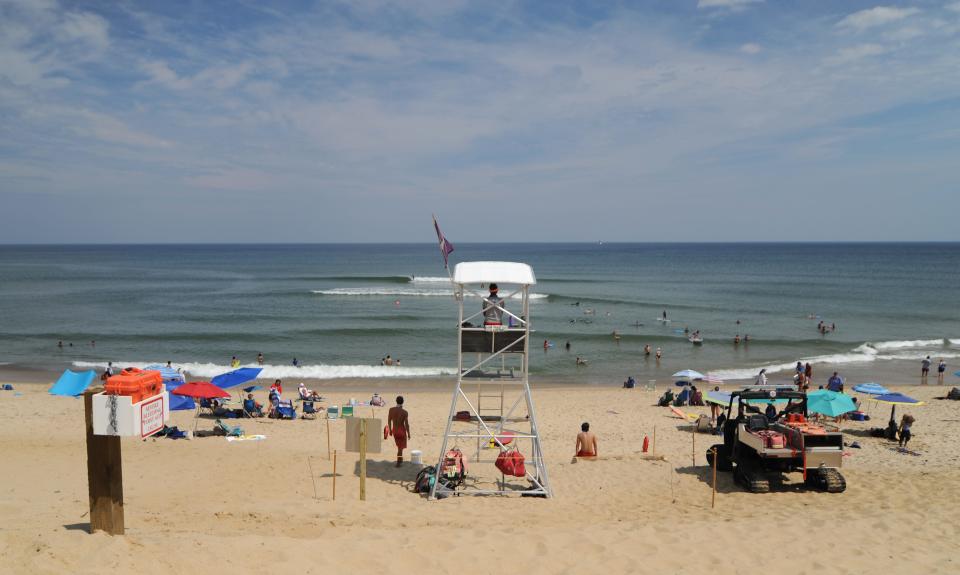3 things to know about rip currents: Essential safety tips for Cape Cod beaches
If you're planning a big day at a Cape Cod surf beach, it's a good idea to keep rip currents in mind. Rip currents are powerful and difficult-to-identify channelized currents of water rushing back to sea. They can pull swimmers offshore and turn a carefree swim into a grueling fight for survival.
According to the United States Lifesaving Association (USLA), rip currents "are the #1 hazard at a surf beach, leading to tens of thousands of rescues by lifeguards and over 100 drowning fatalities every year in the United States."

Rip currents can develop on any beach with breaking waves. On Cape Cod, these surf beaches include those that face the open Atlantic Ocean. Here is essential information from a USLA/NOAA fact sheet
about rip currents:
What can people do if caught in a rip current?
If caught in a rip current: Try to remain calm to conserve energy. Don’t fight the current. Think of it like a treadmill you can’t turn off. You want to step to the side of it. Swim across the current in a direction following the shoreline. When out of the current, swim and angle away from the current and towards shore.
More: Cape Cod Beach Guide 2022
If you can’t escape this, try to float, or calmly tread water. Rip current strength eventually subsides offshore. When it does, swim toward shore. If at any time you feel you will be unable to reach shore, draw attention to yourself: face the shore, wave your arms, and yell for help.
How can people assist others who are caught in a rip current?
If you see someone in trouble, get help from a lifeguard. If no lifeguard is available, have someone call 911. Throw the rip current victim something that floats – a lifejacket, a cooler, a ball. Yell instructions on how to escape.
More: Cape Cod beach sticker information 2022
Many have died trying to help others. Don’t become a victim while trying to help someone else! Before you leave for the beach, check the latest National Weather Service forecast for local beach conditions. Many offices issue a Surf Zone Forecast. When you arrive at the beach, ask on-duty lifeguards about rip currents and any other hazards that may be present.
How can I identify a rip current?
Signs that a rip current is present are very subtle and difficult for the average beachgoer to identify. Look for differences in the water color, water motion, incoming wave shape or breaking point compared to adjacent conditions. Look for any of these clues: Channel of churning, choppy water. Area having a notable difference in water color. Line of foam, seaweed or debris moving steadily seaward. Break in the incoming wave pattern. One, all or none the clues may be visible.
This article originally appeared on Cape Cod Times: 3 things to know about rip currents at Cape Cod and other MA beaches

